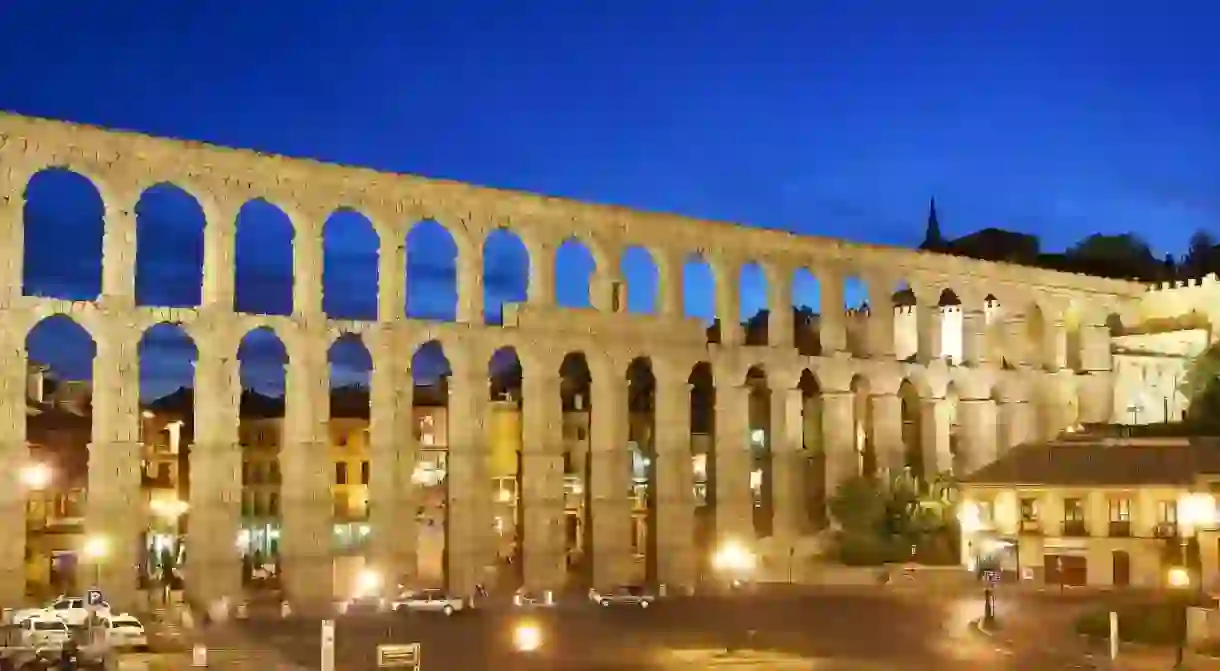7 Stunning UNESCO Sites You Have to Visit in Spain

Spain has the third most UNESCO World Heritage Sites of any country in the world, from Moorish fortresses to fairytale turn-of-the-20th-century architecture. We take a look at some of the most impressive UNESCO sites to visit in Spain.
Works of Antoni Gaudí, Barcelona
One of Barcelona’s most famous sons, Antoni Gaudí, left an unmistakable legacy to the city in the form of his architecture. The most famous proponent of Catalan Modernism, Gaudí designed buildings around the city in the late 19th and early 20th century. Seven of his works are included in the ‘Works of Antoni Gaudí’ UNESCO World Heritage Site, including his unfinished basilica the Sagrada Familia, Casa Mila, Park Güell and his first build – Casa Vicens. Gaudí, a devout Catholic, wove religious and natural imagery throughout his designs, which included curved lines and details like mosaics and wrought iron.

Alhambra and Generalife, Granada
Granada’s Moorish hilltop fortress started life as a small fort before being lavishly extended in the 13th century by the city’s Nasrid emirs. Often cited as the most sublime Islamic building in Europe, the Alhambra – especially its centrepiece of the 14th-century Nazaríes Palace – is a showcase of Islamic design, architecture and craftsmanship. Outside, the Generalife gardens are a wonderful display of fountains, patios and pristine hedges and flowers. The Generalife, also part of the UNESCO World Heritage Site, was the summer residence of the emirs.

Roman remains, Tarragona
Spain’s most complete Roman remains are to be found in the northeastern city of Tarragona, or Tárraco, as it was named by the Romans. It was an important city in Roman Spain and the first Roman settlement on the Iberian Peninsula. Today, important remains that have been designated a World Heritage Site by UNESCO include the city’s impressive seaside amphitheatre, which dates to the 2nd century AD, as well as its forum, circus and Roman walls.

Segovia aqueduct
Another Roman World Heritage Site in Spain is the aqueduct that dominates the centre of the city of Segovia, northwest of Madrid. One of the best-preserved Roman aqueducts in the world, its 166 arches carried water from the River Frio, 17km (10.5 miles) from the city. Amazingly the feat of engineering, which was built around the 1st century AD, is held together by gravity alone; there is no mortar holding the stones together.

Palaeolithic cave art of Altamira, Cantabria
The cave paintings of Altamira, in Cantabria, northern Spain, date back as far as 35,500 years, and were created during the Upper Palaeolithic period. The charcoal and polychrome drawings and paintings, which depict animals and handprints in varying shades, are exceptionally well-preserved thanks to the depths of the caves. The ceiling of the cave features the paintings of a herd of now-extinct steppe bison, as well as deer, wild boar and horses. Because the carbon dioxide from visitors was damaging the paintings, access was closed, but a museum and cave replica can be visited nearby.

Historic centre of Córdoba
A mixture of Roman, Moorish and Christian influence, Córdoba, in southern Spain, became a great seat of power after the Moors invaded the Iberian Peninsula in the 8th century. The city was filled with mosques and palaces, the grandest of which was the Great Mosque, constructed in 784, standing today as the city’s cathedral. It remains one of the world’s most impressive examples of Islamic architecture, with its columns and red and white archways, and its tranquil orange tree courtyard.

Historic city of Toledo
The picturesque city of Toledo, south of Madrid, is a wealth of over 2,000 years of history; from a Roman town and capital of Visigothic Spain to a centre of convivencia (coexistence) – where Christians, Jews and Muslims lived together in relative peace. The mix of cultures in the city has left it with a rich array of architecture, from its Jewish quarter to the Cristo de la Luz mosque and looming Gothic cathedral.














